(Haven’t posted since 2016)
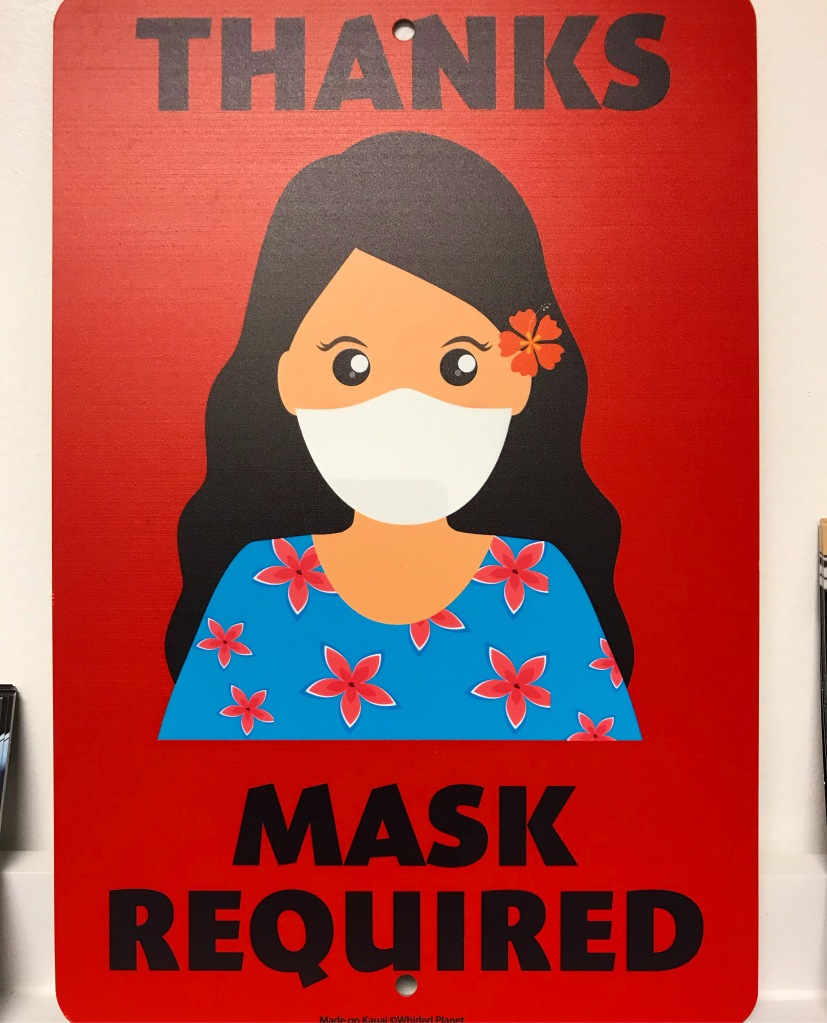
(Haven’t posted since 2016)

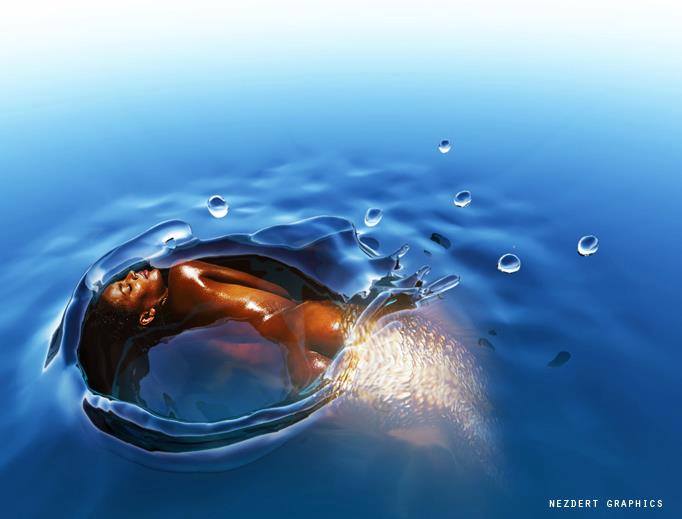
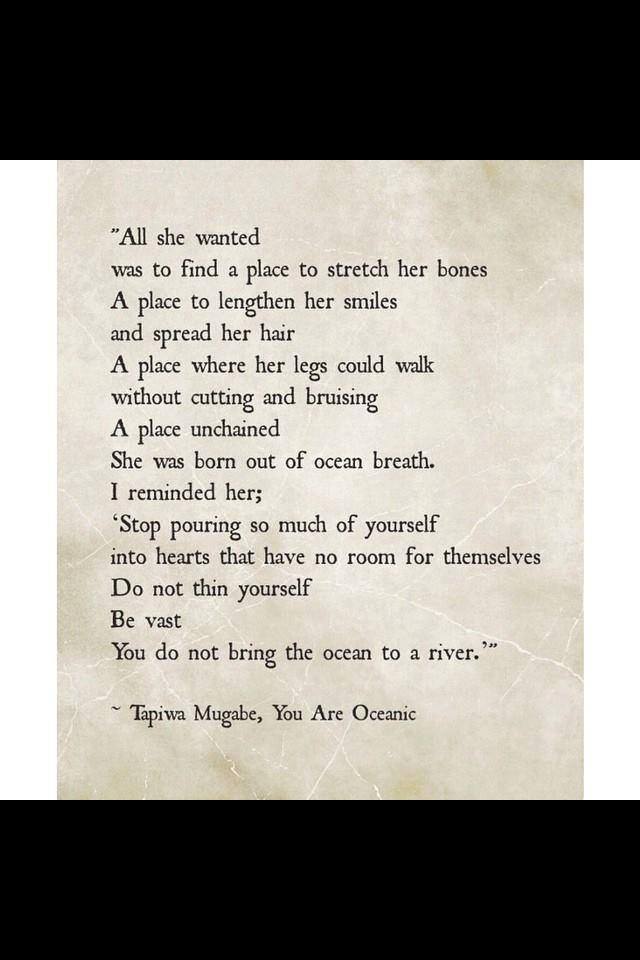
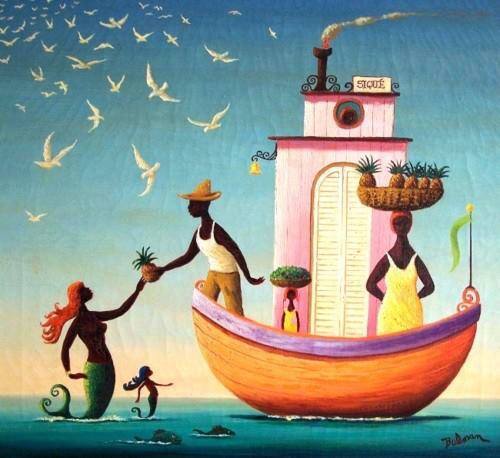

The Karoo is a vast semi-desert area that covers much of the western half of South Africa – and is divided into the Groot Karoo (which means the ‘large’ Karoo in Afrikaans) in the north, and much more fertile, smaller Klein Karoo of the south – where many a local claims to have spotted a mermaid combing her hair alongside a mountain rock pool.
The legend seems far more plausible when you consider that 250 million years ago the stark, beautiful landscape of the Klein Karoo was completely underwater! When the oceans receded, they left behind a fertile valley that’s nestled between the Swartberg, Langeberg and Outeniqua mountains – where mountain springs trickle into the rock pools, and carve out the underground caverns that are said to provide sanctuary for this mythical creature.
The Klein Karoo was the home of the Khoi-san people, and rock paintings have been discovered that depict fish-tailed humans – suggesting that the legend of the Karoo mermaid has been around for centuries. It makes sense that a tribal people, living in one of the driest parts of South Africa, would have a sea creature as part of their mythology – a reminder, perhaps, of the importance of water as a resource that has always been precious.
It has been argued that the ‘fish people’ in the San rock painting rather depict swallows, which are also associated with rain. Shamans of the San tribes, who were a spiritual people, would have often conducted ceremonies to call down rain from the heavens, to parch the dry earth of their homelands. African mythology sparkles with tales of water spirits and creatures!
Traditionally, the mermaid is a symbol of both destruction and creation. It is a well-known sailor’s tale that sighting a mermaid means that violent storms are blowing in. As a symbol of the feminine life force, the mermaids of the Karoo could not be more at home – when the rains soak the arid plains, the Karoo bursts into life and colour, with succulent plants flowering in bright cheerful displays that attract photographers and tourists.
Myth of mermaids is popular all around the world, but the African water spirit Mami Wata remained respected and celebrated from the time before the African nations came in contact with Europe, through the ages, and even up to today where she is venerated in West, Central, Southern Africa and the diaspora in Americas. She represented one of the most powerful goddesses in the African religion of Voudun (not to be mistaken to the newer and more heavily publicized Voodoo) and is today celebrated as a goddess that must be both loved and feared.
As with many other old mermaid deities such as Assyrian Astarte, Babylonian Ishtar and Greek Aphrodite, she is regarded as an immortal spirit that personifies polar opposites, such as of beauty and danger, natural force and healing, wealth and destruction, health and disease, and inability to follow ideas of good and evil. As those old mermaid deities, she is incredibly powerful, dangerous, pleasant, sexual and able to destroy anything on her path.
Her image in the minds of African followers went through little changes over the millennia. She is often portrayed as a long haired beautiful mermaid, half human and half fish, but sometimes she can walk the earth in more human body (but she never transforms completely into human form, always showing herself as a deity). Her clothes and jewelry are always new, shining, impossible to replicate, and she can be seen carrying small mirror, coiled snake that twist around her waist, breasts and head. This wealth symbolizes the wealth and beauty her followers can achieve, and interestingly her skin is fair and light, which is uncommon in the African pantheon of deities. Colors of Mami Wata’s attire carry great significance in African people. Red symbolizes the color of blood, violence and death, and white symbolizes spirituality, beauty and female body. In the mermaid form she is always represented naked, sometimes combing her long hair and looking at herself in the golden mirror.
Stories of the encounters with the Mami Wata are widespread across entire Africa. In most common version, she stalks the shores of the ocean and abducts men and women while they are swimming or traveling in a boat. If the goddess thinks that the captive is worthy of her attention, she will return them to the shore, completely dry and with changed attitude toward spirituality and religion that can often make them rich, attractive and famous. Other encounters tell the story of her leaving her comb and mirror in the presence of sailors. After they took the items she would haunt their dreams, requesting the return of the items in an exchange of eternal sexual favors.
Her devotees across Africa and diaspora wear her traditional colors of red and white, offer her items of wealth, expensive foods, and celebrate her in the rituals of dancing and music that induce trance like state. In such events, it is believed that Mami Wata can possess the dancers and speak to them, whishing them the successful, healthy and fertile life.
However as all deities that are water based, she is blamed for many of the misfortunes that happen in the sea. Even today, people of Cameroon believe that her wrath is killing the swimmers who are swept to the sea with the strong undertow water currents that flow near their coast.

Mermen are little harder to find information on, in part because of the patriarchal society we live in thus requiring our focus to be on the more youthful female counterparts, ignoring even their predatory traits in favor of an overly sexualized fantasy. So the Men are forced to the background despite the powerful mythology they hold in numerous water based cultures.
Merman – Mermen in Mermaids Mythology
Through the history of human mythology and religion, mermaids received much attention, but their male counterparts were much less showcased. While mermaids represented beauty and romance that the predominately male ship crews longed on the long journeys, mermen remained left behind in the folklore, usually shown only as a children made in a union of a man and mermaid.
In their appearance, mermen do not differ much from mermaids. They are mythical creatures who have form of an upper human torso, and a lower half of a fish tail. Originally celebrated as the deities, mermen slowly slipped back into the legends as the ordinary mythological creatures of the sea, who very rarely show up on the surface. The reason of that was sometimes because of their shyness and sometimes because their ugliness.
The best known deities that had the form of mermen were Babylonian Oannes, Ea (also known as Enki in Sumerian mythology), Dagon (sea god of fertility); Triton, son of Poseidon and Amphitrite were regularly depicted on stone walls and pottery as strikingly handsome mermen with a fish tail. He often carried trident and twisted conch shell (which he used to control the sea and calm or raise storms) and was believed to have the power to multiply himself into host of smaller sea sprit demons called Triones. Indian Hindu religion also celebrates mermen, as they are believed to be the first incarnation of their supreme deity Vishnu (the only difference to the modern mermen is presence of two sets of arms, each holding one artifact – conch shell, wheel, Lotus and Mace).
Around the world, many cultures have their own myths and folklore tales about mermen. Here are some of the most notable ones:
With the rise of the modern view of mermaids that started with the appearance of the Hans Christian Andersen’s fairytale “The Little mermaid”, mermen revived an increased attention in the minds of public. During the last few decades, mermen became part of many fantasy settings as one of the most common dwellers of the sea, and with each passing year their appeal grow more and more.
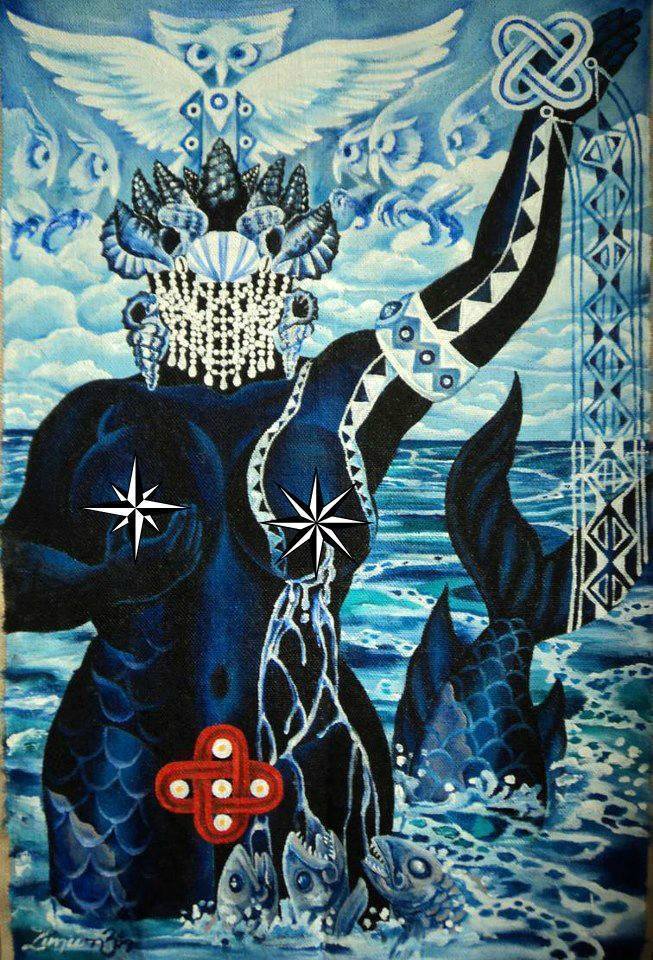
Yemayá (also spelled Yemoja, Iemoja, or Yemaya) is one of the most powerful orishas in Santeria. She is the mother of all living things, rules over motherhood and owns all the waters of the Earth. She gave birth to the stars, the moon, the sun and most of the orishas. Yemaya makes her residence in life-giving portion of the ocean (although some of her roads can be found in lagoons or lakes in the forest). Yemaya’s aché is nurturing, protective and fruitful. Yemaya is just as much a loving mother orisha as she is a fierce warrior that kills anyone who threatens her children.
Yemaya can be found in all the waters of the world, and because of this she has many aspects of “caminos” (roads), each reflecting the nature of different bodies of water. She, like Oshún, carries all of the experiences of womanhood within her caminos. Contrary to popular belief she is not just a loving mother. Some of Yemaya’s caminos are fierce warriors who fight with sabers or machetes and bathe in the blood of fallen enemies. Other roads are masterful diviners that have been through marriage, divorce and back again. Some roads of Yemaya have been rape survivors, while other roads betrayed her sisters out of jealousy and spite. No matter what camino of Yemaya, all are powerful female orishas and fiercely protective mothers.
Yemaya has a very special relationship with two orishas in particular: Oshún and Chango. Oshún is often depicted as Yemaya’s sister, and Yemaya allows Oshún to take residence in her rivers. Yemaya and Oshun relate to one another like typical sisters; they love each other and also have a bit of sibling rivalry. Chango and Yemaya are inseparable. Some followers of Santeria say Yemaya is Chango’s mother. The two of them eat together and Chango shares his wealth with Yemaya. Yemaya helped mold Chango into the wise leader he was meant to be from birth (although he initially lacked the skill to rule with grace).
Different roads of Yemaya have had relationships with many of the male orishas including: Orunmila, Ogun, Inle, Orisha Oko, Obatalaand Aggayu. She is one of the four pillars of the Santeria religion along with Obatala, Oshun and Chango. Therefore every initiatedolorisha will receive her pot with her mysteries at his kariocha initiation.
Number: 7
Sacred Place in Nature: the ocean, lagoons and lakes
Colors: blue and clear
Tools: oars, boat steering wheel, anchor, life preserver, machete (for Ibú Ogunte), a scimitar (for Ibú Okoto)
Temperament: Nurturing, loving, direct, frank
Syncretized Catholic Saint: The Virgin of Regla
Yemaya has many caminos or “roads”. Each road has a slightly different temperament and is found in a different place in nature. All roads of Yemaya are called “Ibú” and each takes a slightly different shade of blue in her eleke. Here is but a sampling of her caminos.
Ibú Asesú – this road of Yemaya is born in the odu Odí Meji (7-7). She lives in the sea foam where the waves crash on the shore. She is said to be forgetful and slow to answer her children’s prayers. Her color is sky blue.
Ibú Achabá – this road of Yemaya was the wife of Orunmila. She is a mighty diviner that learned how to read the composite odu by watching her husband when he divined. Her color is turquoise or medium blue.
Ibú Ogunte (Okuti) – this road of Yemaya was married to Ogún. She lives in the lakes and springs in the forest. She is a mighty warrior that fights with a machete, and enjoys rum and cigars. Her color is cobalt blue.
Ibú Agana – this road of Yemaya is Olokun’s favorite but deformed daughter. She betrayed her sisters and is forced to carry a mask and serpent, and act as Olokun’s slave and messenger as her punishment. She was also married to Orisha Oko. She brings rain. Her color is royal blue.
Ibú Mayelewo – this road of Yemaya lives in the middle of the sea and controls the currents of the seven seas. She wears seven different colors and owns the colors of the world which she keeps in a calabash around her waist. She lives in a basket surrounded by plates and her color is aqua.
Ibú Okoto – this road of Yemaya is a powerful warrior, almost like a pirate. She wears pants and kills her enemies with a scimitar or daggers. She lives in the red tide that is dyed with the blood of her enemies she has murdered. Her color is navy blue.
Yembo – this road of Yemaya is an orisha funfún (white orisha) that many consider in the court of Odudua. She gave birth to all of theorishas and in many ways is the cosmic mother of all things. She is the calm sea at the seashore. Her color is pale blue and white.
Yemaya enjoys rich and delicious foods, many of which she shares with Changó. Yemaya enjoys rooster, ram, and guinea hen.
A delicious cooked addimú you can make for Yemaya is Candied Ñame with Coconut for Yemayá. You’ll need a large ñame, sweetened coconut flakes, a can of coconut cream, and sugar cane syrup. Ñame is a root vegetable from the tropics related to the yam that’s white on the inside, rough and brownish gray on the outside. Remove the peel from the ñame and cut it into 1 inch cubes. Boil the ñame until it is fork tender. Toast half a cup of sweetened coconut flakes in a pan to get them slightly golden and set aside to cool. Remove the ñame from the water and roughly mash it up with a fork. Stir in a can of coconut cream and mix well. Serve the mashed ñame in a bowl and drizzle cane syrup over it (you can substitute molasses if you can’t find cane syrup). Garnish by placing the toasted coconut on top of the molasses drizzle. To serve, place a grass mat (estera) on the ground and place Yemaya’s pot on the mat. Place the bowl of the Sweet Mashed Ñame with Coconut beside Yemayá and light a seven day blue candle before her. Remove the addimú after the proper amount of time and dispose of the offering in nature as marked through divination.
A great addimú for Yemaya is a whole watermelon. Buy a large watermelon with seeds, and wash it clean. Place a grass mat (estera) on the floor, place Yemaya’s pot on the grass mat, and place the watermelon on a white plate beside her. Leave the watermelon there for the appropriate amount of time as determined through divination. Once the time has come remove the watermelon and take it to the ocean or a large lake if the ocean is not near your home. Present the watermelon to Yemaya in the waters before you. Then out of respect for the environment, dispose of the melon in a trash can near by (to prevent litter) and leave seven pennies with it.
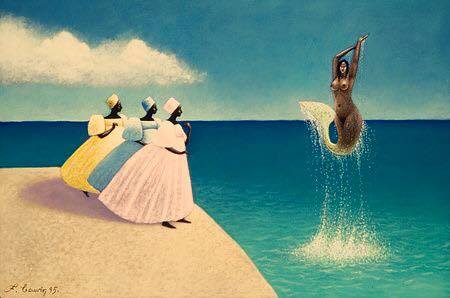
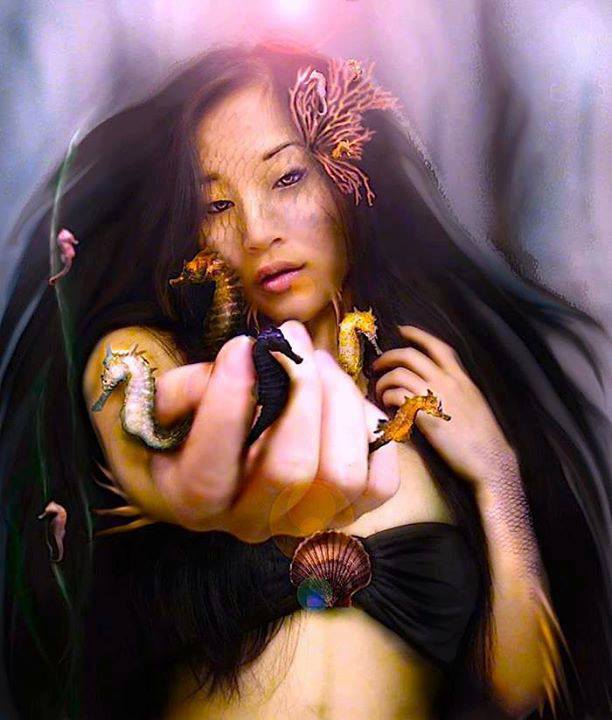
Mermaids are a part of myth and folklore in many cultures around the world. In Japan, legends from centuries ago tell stories of frightened fishermen encountering these mysterious creatures of the sea, and unlike the modern images we have of beautiful mermaids, most of the Japanese creatures were downright scary, evil, and ugly, as if straight out of a horror movie.
Because of its geography, Japan has always had a very close relationship with the waters that surround the islands. For this reason, stories about ningyo, or human-fish, abound from centuries ago. These stories, which are tales told by seamen and fishermen, are not of the romantic or mystical kind, but ones of absolute horror and fear. The Japanese mermaids are described mostly as being beast-like and grotesque, more of a cross between a fish with a monkey, not a beautiful woman like the mermaids of Europe and elsewhere. They would be deformed, usually lacking a torso at all, with the lower body of a fish and human-like head attached to it, sometimes with horns or fangs. Some of them were known to shape-shift, able to turn into a beautiful woman. The woman would seduce a fisherman to go swimming with her, then turn into a giant jellyfish and kill the poor guy in the dark ocean waters.
But of course, these mermaids did have their qualities. Legend has it that some cried tears of pearl, and anybody who consumed the flesh of a mermaid was said to attain eternal youth. However, no written records exist on how they tasted or how they were prepared.
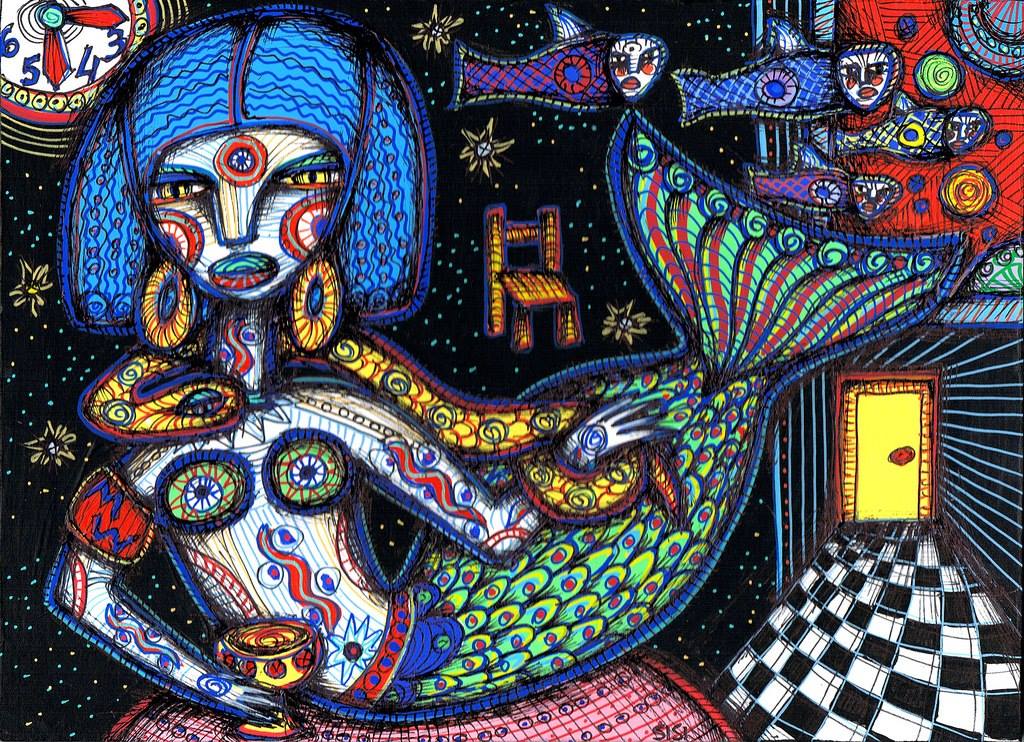
As the human civilizations mastered the art of naval travel, stories from distant lands circulated across the Earth, merging with the old religious and folklore tales of old and forming new legendary creatures. One of such famous creatures is the South American myth of mermaid Iara (or sometimes called Uira and Yara) that has managed to gain great hold in the minds of the Brazilian people.
Created by combining ancient local myths about water snake spirits and possibly African goddesses of a Mami Wata and Yemaya, the Iara was mermaid like creature that was often called the “Mother of the Waters”. She is described as a beautiful woman with green eyes, shinning hair and mesmerizing voice. As many mermaid myths across the world, Iara also had a dual nature. In one of her aspects, she often appeared sitting on the shores of the rivers and lakes (most famously in the Amazon regions) singing her enchanting songs. When he managed to attract unsuspecting males to her, she took them to the water where she agreed to spend their life with them. As she was immortal, she could not remain with their loved ones for long and generally spend the majority of their immortal existence in sadness, recollecting old and happy days.
However, she also had a darker nature which results in death of many people. Pretty much any misfortune of death in the vicinity of the water or deep woods is attributed to the Iara’s influence, and natives of Amazonia (Brazil and Columbia) even today fear her and avoid water traveling or coming near a lake or river during the night. According to their beliefs, she is responsible for the deaths of thousands of people (pretty much everyone who got lost in the deep tropical woods is believed to have been enchanted by her song) and hundreds of destroyed ships.
The modern day view of Iara (very popular girl’s name) has been established by Brazilian poet Gonçalves Diaz who named her by combining the two words from native Tupi language – “ig” meaning water and “iara” which means lord of lady. In addition to her female mermaid form, Brazilian natives also preserved mythos about her original snake spirit called Mboiaçu who is believed to be personification of “trouble makers” and misfortune.
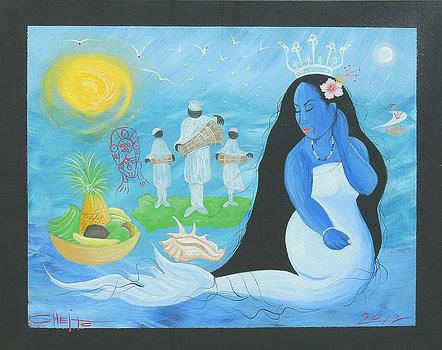
Among the myths about mermaids and sirens, one story remains very prominently showcased and remembered in the modern society – tale of a lovely girl Sirena who was transformed into a mermaid in a curse. Originally introduced in the early days of Spanish colonization of Pacific (sometimes between 1565 and early 17th century), this tale remains one of the most treasured folklore stories of Guam and the countries that surrounds it. Even today, stories about the life of young Sirena are talked all across Guam, and the local sailors still believe that she sometimes visit their shores.
The story of Sirena starts in her young age while she lived care free life in the city of Agana (near the Minondo River) which was one of the first Spanish settlements in Pacific Ocean. One thing that she liked more than anything was swimming and she used all of her free time for swimming in the sea or Minondo River. One day her mother asked her to collect few coconuts so that their family can eat, but Sirena became distracted, and instead of finding food she spent entire day swimming in the river. At the end of the day Sirena’s mother and grandmother went to look for her, and were astonished to find her playing and swimming in the sea. In a moment of anger, Sirena’s mother turned to her and said “if you love to swim so much then be a fish!”. In an instant, Sirena started felling strange and noticing changes in her body. Thankfully, Sirena’s grandmother quickly interceded and added that she must remain half human, thus saving her life. After a transformation, Sirena was transformed into mermaid, whith the half part of her body turned into a fish. Seeing the results of her curse, Sirena’s mother quickly regretted her words, but the damage was done. Sirena was now forever changed into a mermaid, and after a farewell she swam into the ocean never to be seen again by them.
To this day, sailors and people living in Guam are reporting the sightings of young Sirena, forever watching their shores and protecting them. Folklore stories are saying that Sirena will never appear willingly among the people, and that she can only be caught by net made from human hair.
| Mama Glow or Mama Dlo or Mama Dglo
“Mama Glow” or “Mama Dlo” or “Mama Dglo” whose name is derived from the French “maman de l’ eau” which means “mother of the water” is one of the lesser known personalities of Trinidad and Tobago folklore. A half woman, half snake with long flowing hair which she combs constantly. Her upper torso is a naked, beautiful woman, the lower part coils into a large form of an anaconda snake that is hidden beneath the water. She is sometimes thought to be the lover of Papa Bois, and old hunters tell stories of coming upon them in the ‘High Woods’. They also tell of hearing a loud, cracking sound which is said to be the sound made by her tail as she snaps it on the surface of a mountain pool or a still lagoon. Mortal men who commit crimes against the forest, like burning down trees or indiscriminately putting animals to death or fouling the rivers could find themselves married to her for life, both this one and the one to follow. Sometimes she takes the form of a beautiful woman ‘singing silent songs on still afternoons, sitting at the water’s edge in the sunlight, lingering for a golden moment, a flash of green – gone. Nothing but a big Morte Bleu, rising in the sun beams. Old people talk: “Did you see a fish jump?” “Yes, but it did not go back in again!” If you were to meet Mama Dlo in the forest and wish to escape her, take off your left shoe, turn it upside down and immediately leave the scene, walking backwards until you reach home. |
| Mermaids and Fairymaids
Mermaids and Fairymaids (Tobago Folklore) – There be mermaids here and Leviathan, great denizens of the deep. Amongst the swirling currents and white capped blue-green waters, just where the Caribbean Sea meets the Atlantic Ocean, close by St. Giles and near to Misty Marble Island, past Anse Gouleme and Anse Brisant, towards the Bird of Paradise Island and down the coast past Speyside to Fat Hog Bay, it is remembered from long ago that this was where the mermaids came to play. Tobago mermaids are male and live in the deep, deep sea. They mate with the fairy maids of the rivers and the secret mountain pools. Riding upon the crest of waves, they are handsome men like kings of old or warriors of long ago, beplumed and richly garbed. They may grant a wish, transform mediocrity into genius and confer wealth and power. Sometimes the water people seek relationships with mortals. Some men are particularly attractive to the fairy maids, especially men with smooth skin. Fairymaids are said to be beautiful with long lush hair and one tiny foot in the shape of a deer’s hoof, she may use her power to “turn” a man’s head. She may steal his shadow and leave him quite demented. In which case, accompanied by friends and family and with the help of a “workman”, he must go to the river and address the water pleading for the restoration of his lost shadow. This done, he must leave the water’s edge and not look back. Fairymaids may be found in caves behind waterfalls or beneath certain bridges where the river runs deep and swift. In days gone by, they were seen near certain water wheels. To discontinue a relationship with a fairy queen, offerings of two pairs of shoes must be made. The first must be burnt on the beach, the fairymaid will then rise out of the water and ask if she is to be paid for past services. The answer must be “nothing but this pair of shoes”. The second must then be thrown into the waves. |